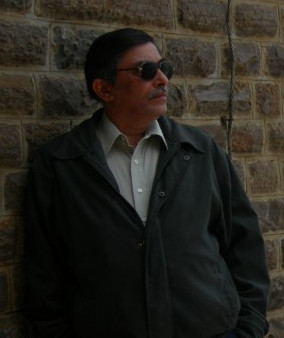“Education today is unfortunately seen as a process of learning to ape the West, a la Macaulay, so math is taught from a purely Western perspective. This way of teaching math retraces the European experience of learning math: so the historical difficulties experienced by Europeans are replayed in the math classroom.
The solution to this difficulty is to throw out the religious beliefs that have crept into mathematics, and to go back to something very close to the original understanding in which things like the calculus developed as primarily a tool for calculation. This makes math very simple, and also makes it ideally suited to the present-day technology of computation which has greatly enhanced the ability to calculate.
Some philosophical adjustments are required in the understanding of math; but this should not be a serious problem for anyone except those who are currently regarded as math experts!”
– From ‘A new way to teach Math’ by C.K. Raju available here
The video linked above is an easy-to-understand and very enlightening talk by Professor C.K. Raju. To get you interested in listening to the full talk, I will just reproduce the bullet points he uses to make his introductory points. Enjoy!
– The Math we teach in school and college today is formal math. Which is also known as axiomatic math. This differs from traditional (pre-colonial) ganit. How exactly does ganit differ from math? Isn’t 1+1=2 in both?
(The answer to that is that, no, it is different in both. But you will have to listen to the full talk to understand why)
– Consider the elementary concept of angle (as defined in the Hindi NCERT text). It uses a term called ubhaynishth for the common initial point of an angle made by two straight lines (rays).
(ubhaynishth prarambhik bindu waali do kiranon se eik kon banta hai)
– Ubhaynishth is not there in the Hindi or Sanskrit dictionary. Student must infer its meaning from ubhay and nishth (in Sanskrit) as ‘loyal to both’. Use of such a complicated term suggests that the corresponding concept is absent in Hindi. Is it? What is the Hindi word for angle? kon? Wrong!
– Word ‘kon‘ is not found in Hindi before the 18th century. (Used by Samrat Jagannath 1723 in Rekhaganit, a Sanskrit translation of “Euclid’s” Elements from Farsi)
– So, did Indians have no concept of an angle, earlier? They did. RgVeda divides the circle into 360 degrees or 720 half degrees. The Vedanga Jyotish has even finer divisions of around 0.1 degrees. The concept of the angle in India was different. Chaap is the correct traditional term for “angle”. Angle = relative length of an arc.
– If an angle is about two straight lines, why do we need a semi-circular protractor to measure it? And, what instrument in a geometry box can be used to measure angle in the sense of chaap? None. The two concepts of angle require different instruments for their measurement. The chaap definition requires a flexible string.
– Immediate point is this: Math is NOT universal.
(The rest of this talk is about a more difficult problem, 1+1=2 🙂)
About C.K. Raju:

“Mr Raju has shown that he has great initiative and has worked extremely hard. He is the sort of student one wants to help…. He is working on excessively difficult problems. No one knows the correct lines on which they should be solved.”
– P.A.M. Dirac (Nobel Prize 1933) on a paper by Prof Raju that was later expanded to become Prof Raju’s Ph.D. thesis
“Chandra Kant Raju (born 7 March 1954) is a computer scientist, mathematician, educator, physicist and polymath researcher. He received the Telesio Galilei Academy Award in 2010.”
– From the Wikipedia article available here
Bernardino Telesio and Galileo Galilei are both symbols of resistance to authority. Therefore, it is apt that a key reason why the award is being given to me is for having pointed out Einstein’s mistake, and for having corrected it—for Einstein is one of the greatest figures of scientific authority today.
– From Prof Raju’s acceptance speech of the Telesio Galilei award (full speech available here)
“C-DAC (Centre for Development of Advanced Computing), Pune and Delhi, Member Technical Staff 1988-95. As head of initial Application Development Group, played a lead role in building the first Indian supercomputer PARAM.”
– From Prof Raju’s website linked below
Links for further study:
Dr C.K. Raju’s website
Four part interview with Claude Alvares – Part1 . Part 2 . Part 3 . Part 4
Another interesting talk: A tale of two calendars